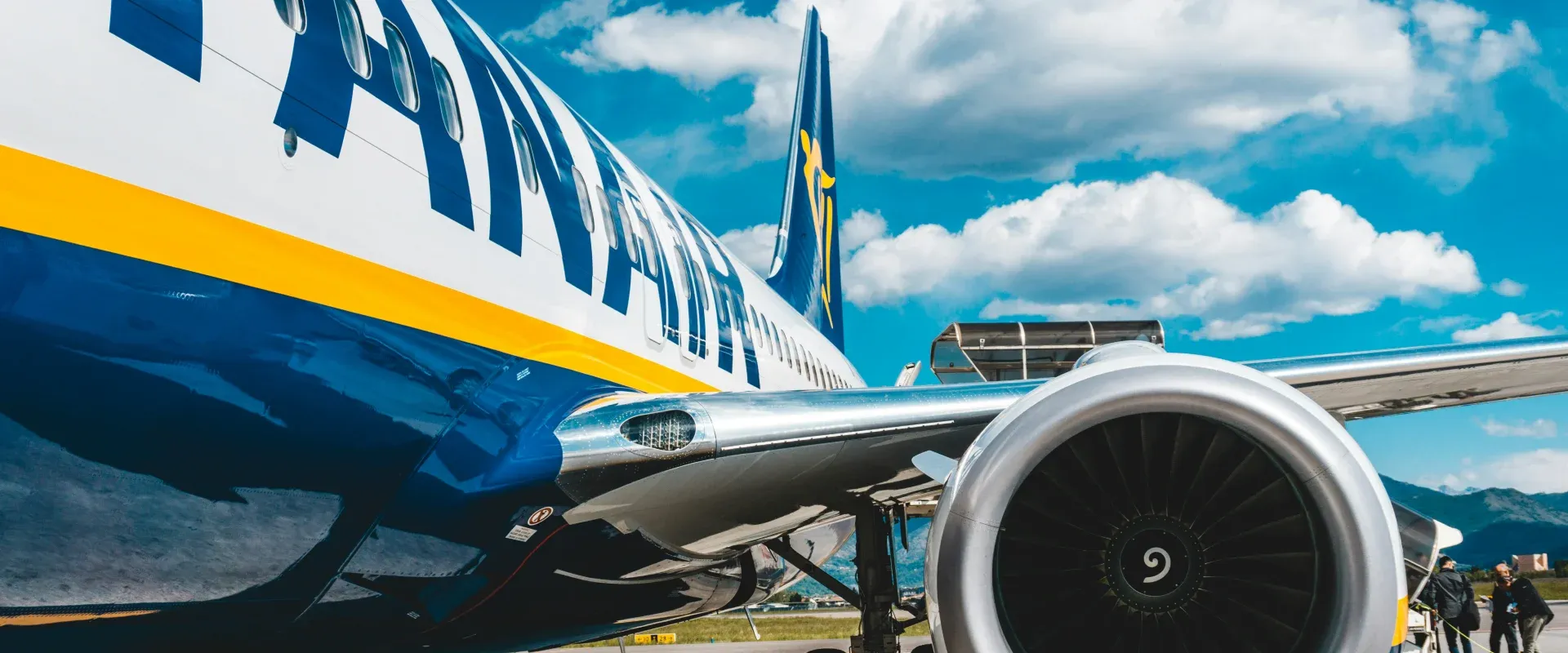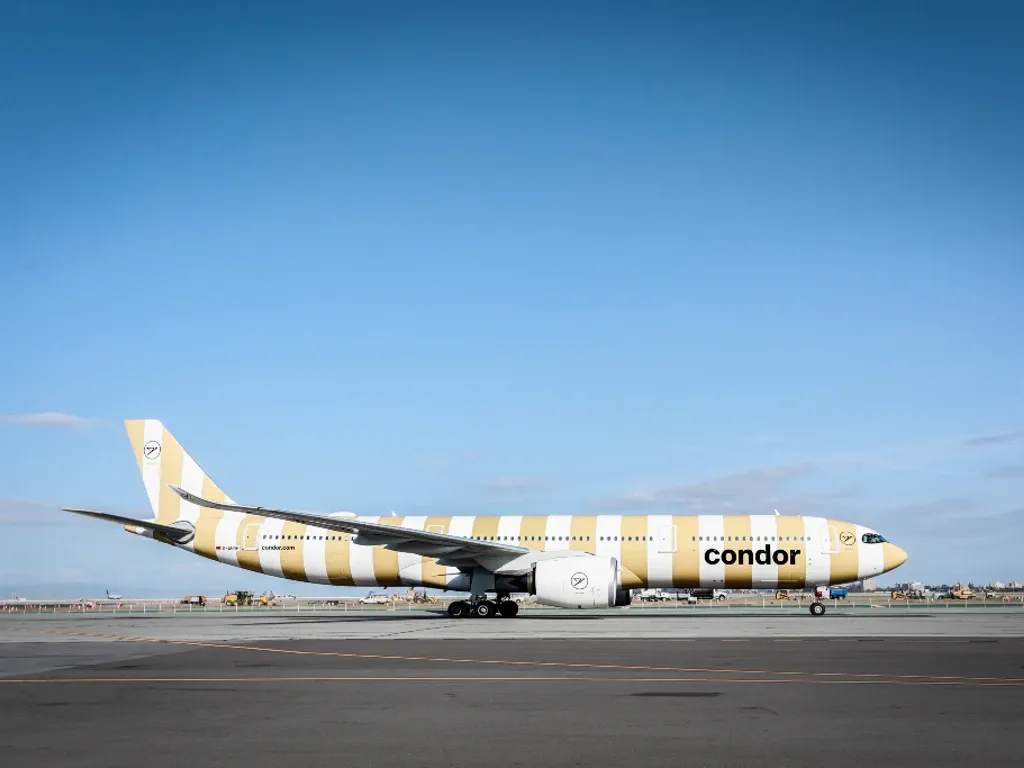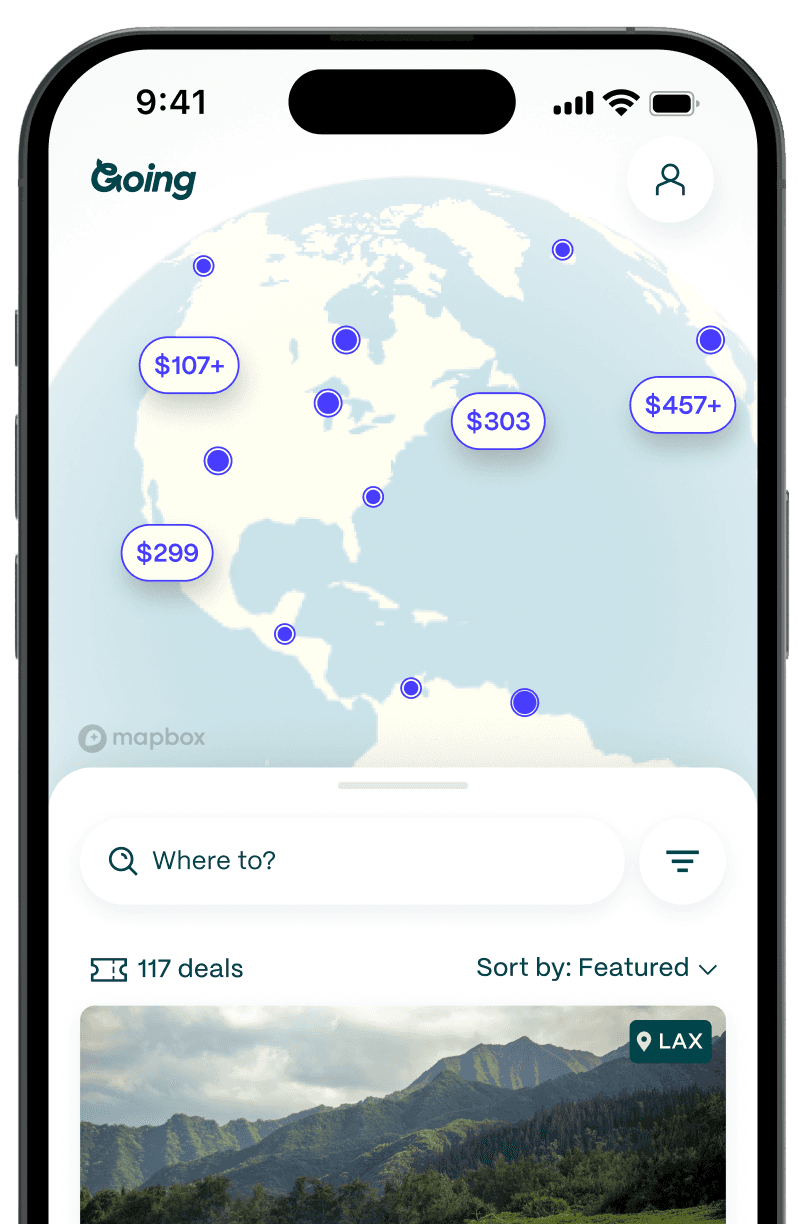
The 15 Best European Cheap and Budget Airlines In 2026
Europe is one of the most accessible regions in the world for travelers on a budget, thanks to dozens of budget airlines that offer short, frequent, and affordable flights across the continent. And, as the flight times often are under two hours, they are perfect for multi-destination itineraries, weekend getaways, or pairing with trains and buses to explore lesser-known regions.
Unfortunately, the world of budget airlines in Europe can be confusing. And between part-time charter airlines, hidden fees, unusual routes, and difficult-to-comprehend fare class breakdowns, navigating this market can be even more complicated.

Whether you're backpacking through the Balkans, city-hopping between capitals, or just trying to get from Paris to Prague without blowing your budget, knowing how to find cheap flights in Europe (as well as what fees or restrictions to watch for) can make or break your plans. Here’s everything we know—from the top budget airlines and cost comparisons to booking strategies and baggage policies—to help you make the most of every euro.
Summarize with ChatGPT | Perplexity | Claude | Google AI Mode | Grok
Top budget airlines in Europe
Ryanair
As Europe's largest low-cost carrier, Ryanair is famous for its ultra-cheap fares and extensive route network. However, it has also become known for its additional fees. You have to pay for services like seat selection, priority boarding, and checked baggage. Besides, the airline often utilizes secondary airports, which often are farther from city centers, potentially increasing ground transportation costs.
As of April 2026, Ryanair serves 229 destinations across 37 countries, covering a vast array of cities throughout Europe.
EasyJet
Unlike most budget carriers, easyJet operates from main airports. So, while its fares might be slightly higher than Ryanair's, the easy airport access is a huge plus. Similar to other budget carriers, easyJet charges for extras like checked luggage and onboard refreshments.
Operating over 1,000 routes across more than 35 countries, easyJet connects major cities and popular destinations throughout Europe and North Africa.
Wizz Air
Wizz Air provides competitive fares to a range of destinations, even to Northern Africa. The airline's basic fares cover only a small personal item, with fees applicable for larger carry-ons and checked bags.
If you’re planning on a long trip across Europe, Wizz Air's "All You Can Fly" membership can help you with unlimited flights for a fixed annual fee. Still, keep in mind that additional charges for services apply.
Wizz Air offers 800 routes from 32 bases in 16 countries and connects nearly 200 destinations across Europe and beyond.
TUI
This carrier is associated with the larger TUI Group, one of the world’s biggest travel and tourism companies. While it’s not always compared against other budget carriers like Ryanair or easyJet, TUI frequently offers low-cost charter and package holiday flights. They also include checked bags in their ticket prices.
TUI operates from multiple European countries including the UK, Germany, Netherlands, and Belgium, serving over 180 destinations. Flights are mostly seasonal and tailored to high-demand holiday periods.
Vueling
Vueling is a Spanish low-cost airline based in Barcelona and part of the IAG group (which also owns Iberia and British Airways). Known for its modern branding and easy booking interface, Vueling is a go-to carrier for budget flights around Western and Southern Europe, especially within Spain and to France and Italy. They offer a loyalty program (Vueling Club) tied to Avios, allowing travelers to earn points that can be used across other IAG airlines. While baggage and seat selection cost extra, the airline stands out for its reliability and digital-first approach.
Vueling is especially useful for regional flights within Spain (Barcelona, Bilbao, Seville, etc.) and for connections between secondary cities that are mostly overlooked by major airlines.
Volotea
Volotea is also a Spanish low-cost airline that specializes in connecting small and mid-sized European cities. The airline was named Europe's Leading Low-Cost Airline for 2024 at the World Travel Awards.
In 2024, Volotea operated up to 450 routes connecting more than 100 small and mid-sized cities in 18 countries. Over half of its routes are exclusive to the airline, including Milan Bergamo–Lyon, Malta–Bordeaux, and Comiso–Lille.
Pegasus Airlines
Based in Turkey, Pegasus Airlines offers budget-friendly flights connecting Europe to destinations in the Middle East and beyond. Pegasus offers affordable options to explore regions beyond Europe. The airline's hub at Istanbul Sabiha Gokcen International Airport is great to make connections to various international destinations.
Pegasus operates scheduled flights to a total of 146 destinations, including 37 domestic and 109 international destinations in 53 countries.
Norwegian Air Shuttle
Norwegian is a low-cost airline based in, you guessed it, Norway. Once famous for its low-cost transatlantic routes, Norwegian now focuses on regional flights and prioritizing comfort at a reasonable price. Thanks to free wifi on many routes and a more relaxed cabin experience, it stands out from its ultra-low-cost competitors. Unfortunately, like most budget airlines, expect to pay extra for meals, baggage, and seat selection.
The airline operates a short-haul network across the Nordics and to key European destinations.
Transavia
Owned by the Air France–KLM group, Transavia is a trusted option for low-cost travel from Western Europe to sunny destinations in Southern Europe and North Africa. While its base fares are competitive, what sets Transavia apart is its integration with the larger KLM network
As of April 2026, Transavia serves 3 domestic destinations and 86 international destinations in 25 countries.
Jet2
Jet2 is particularly popular among leisure travelers heading to beach resorts and Mediterranean destinations. While technically a low-cost carrier, Jet2’s policies are less strict than rivals, such as Ryanair. They include more baggage and have fewer hidden fees.
Operating over 570 routes from 13 UK airports, Jet2 connects travelers to more than 75 destinations across Europe, including sun, leisure, city, and ski destinations.
Eurowings
Eurowings is the low-cost subsidiary of the Lufthansa Group and flies across much of Europe from its German hubs. While prices are often higher than Ryanair or Wizz Air, its main asset is the structure and reliability of a legacy carrier’s brand. It’s also one of the better options if you're booking a multi-leg European itinerary and want to avoid extreme baggage or seating restrictions.
Eurowings flies to over 210 destinations worldwide, with a focus on European cities and holiday destinations.
Condor
Condor is a German leisure-focused airline that operates both short-haul and long-haul routes. It offers a hybrid model—somewhere between a traditional and budget airline. This means that base fares are competitive, and onboard service is slightly upgraded compared to ultra-low-cost competitors.
Condor mainly flies from Germany to holiday destinations in Southern Europe (Spain, Greece, Italy, etc.), as well as long-haul destinations in North America, the Caribbean, Africa, and Asia. In Europe, its routes often include seasonal and charter flights to beach destinations from smaller German cities.
SAS Low Cost (SAS Go Light)
While not a separate airline, SAS (Scandinavian Airlines) offers a low-cost fare class known as “Go Light.” It targets budget-conscious travelers who want to fly with a reputable legacy carrier but are willing to skip checked baggage and extra perks.
SAS Go Light is available on short-haul European routes and transatlantic flights departing from SAS hubs in Stockholm, Copenhagen, and Oslo. The most competitive Go Light fares are typically found on intra-European routes.

Peach Aviation
Peach Aviation is a Japanese low-cost airline under the ANA group. While it mainly operates in East Asia, it occasionally appears in joint venture discussions and seasonal codeshare routes in Europe through its partnerships.
While Peach doesn’t serve European destinations independently, travelers flying from Europe to Asia may find themselves on a Peach leg if booking mixed-carrier itineraries.
Flybe
Once the largest regional airline in the UK, Flybe ceased operations in 2020 but relaunched in 2022 with a reduced network.
These days, Flybe focuses on underserved domestic and near-Europe routes, appealing to travelers flying between smaller cities in the UK and continental Europe.
Budget airlines: Cost comparisons
Pricing analysis
| Airline | London to Barcelona roundtrip |
| Ryanair | $40 |
| easyJet | $50 |
| Wizz Air | $45 |
| Norwegian Air Shuttle | $65 |
| SAS Low Cost | $70 |
| Vueling | $55 |
| Jet2 | $60 |
| Transavia | $50 |
| Condor | N/A |
*All prices correspond to one ticket in economy class with one carry-on suitcase.
Hidden fees
Budget airlines in Europe are champions of ultra-low base fares—but that doesn’t always mean you're getting the lowest total price. Many carriers rely on ancillary fees for things that would be included with traditional airlines. Understanding these hidden fees is essential to avoid unpleasant surprises at check-in or boarding.
These are common charges you might see.
- Some airlines only include a small personal item in their lowest fare tiers. Even a standard cabin bag may cost extra.
- Want to guarantee an aisle or window seat? Prepare to pay. Fees can vary by seat location and route.
- A few budget carriers charge if you don’t check in online ahead of time.
- Did you forget your boarding pass? Some airlines will charge to reprint it at the airport.
- Food and drinks are rarely included and often priced higher than what you'd expect for a short flight.
When comparing fares, don’t stop at the headline price. Pay close attention to what’s actually included in the fare class. A flight that appears cheaper might end up being more expensive once you factor in a carry-on bag, checked luggage, or seat assignment. For example, a $30 ticket could easily become $80 or more after fees.
The truth is, if a deal looks too good to be true, it probably is—unless you’re okay traveling with just a small backpack and don't mind getting a middle seat.
Special deals
Budget airlines frequently offer flash sales with unbelievably low fares—think $10 one-way or less. These are often released midweek and may only apply to travel during the shoulder or off seasons. Signing up for airline newsletters or setting Google Flights alerts can help you catch these fares before they disappear.
Three low-cost carriers now offer membership programs that unlock even more savings. For example, Ryanair Prime includes access to exclusive fare sales. Wizz Air Discount Club offers similar benefits, though the discounts tend to be more limited and tied to specific fare types. Vueling Club is another benefit program that allows members to access special pricing that isn’t available to non-members.
Unfortunately, outside of these three, most European budget carriers don’t have robust loyalty or membership programs, at least not ones with meaningful, consistent discounts for average travelers.
If you’re flying into Europe from the US, a Going Premium or Elite membership is your best bet to score cheap transatlantic flights. Once you’re on the continent, these low-cost carriers and airline memberships can help you stretch your budget further as you bounce between cities.
Get the cheapest transatlantic flight deals with Going.
Booking tips for budget airlines
Best time to book
Unlike long-haul international tickets, which often require planning many months in advance, short-haul budget airline fares typically hit their lowest point around 2–3 months before departure. This period is often referred to as the “Goldilocks Window”: not too early, not too late, just right. Booking during this timeframe usually gives you the best shot at low fares before prices start creeping up as the plane fills.
If you’re traveling during high-demand periods (think summer, school holidays, or the winter holiday season) it’s a good idea to book even earlier, ideally 4–6 months out.
Using comparison websites
To make sure you're actually getting a good deal, it’s smart to use flight comparison tools that aggregate fares from both budget and full-service airlines. Websites like Google Flights, Skyscanner, and Momondo allow you to compare multiple airlines across different travel dates and airports.
These tools often include helpful features like fare calendars and price trend indicators that can help you find the sweet spot for your travel window.
Stay flexible
Flexibility is the best way to save big when flying budget airlines. Flying mid-week, especially Tuesdays and Wednesdays, tends to be significantly cheaper than weekends, when leisure travelers are most active. Similarly, changing your dates, even by a few days, or choosing early-morning or late-night flights can make the difference.
Being flexible also means considering alternate airports. Many cities in Europe have multiple airports—some of which are hubs for low-cost carriers.
Keep quality in mind
When you see a $15 flight, it’s tempting to hit "book" and celebrate. But taking a moment to consider what that ticket actually gets you before booking is key. Many budget flights don’t include essentials like carry-on bags, seat selection, or in-flight refreshments. Seats may be narrower and have limited legroom, and customer support is often minimal, especially during disruptions like delays or cancellations.
Sure, for short hops (under 2 hours) this might not matter. But if you're flying longer routes (say, 3+ hours to the Canary Islands or Scandinavia) you might want to spend a bit more for more comfort or flexibility.
Always check traditional airlines too
It’s easy to assume that budget airlines are always cheaper, but that’s not necessarily the case. This is even more so the case if you need extras like luggage or flexibility. Legacy carriers like Lufthansa, Iberia, or Air France sometimes match or beat budget airlines on short-haul routes, particularly during promotions or off-peak travel periods. Best of all, they also often include extras in the base fare: one or two pieces of luggage, a snack or drink, and more spacious seating.
Join Going Premium for the best deals on flights from the US to Europe.
Find the best deals from the US with Going and travel cheaply around Europe
Whether you're hopping from Lisbon to Rome or chasing the Northern Lights in Norway, budget airlines are the backbone of affordable European travel. But to start your Eurotrip, you have to get there first! That’s where Going comes in. Our flight experts constantly monitor prices on cheap flights to Europe to help you save big. Want to know the cheapest airport to fly out of internationally? Or curious about budget international airlines? We've got you covered.
Ready for your next European adventure? Download the Going app and start saving!
Frequently asked questions
What is the cheapest airline to fly with in Europe?
Why are European budget airlines so cheap?
What country is cheapest to fly to from the US?
What is the most reliable budget airline?
What is the cheapest airline to fly from the USA to Europe?
Last updated December 19, 2025









